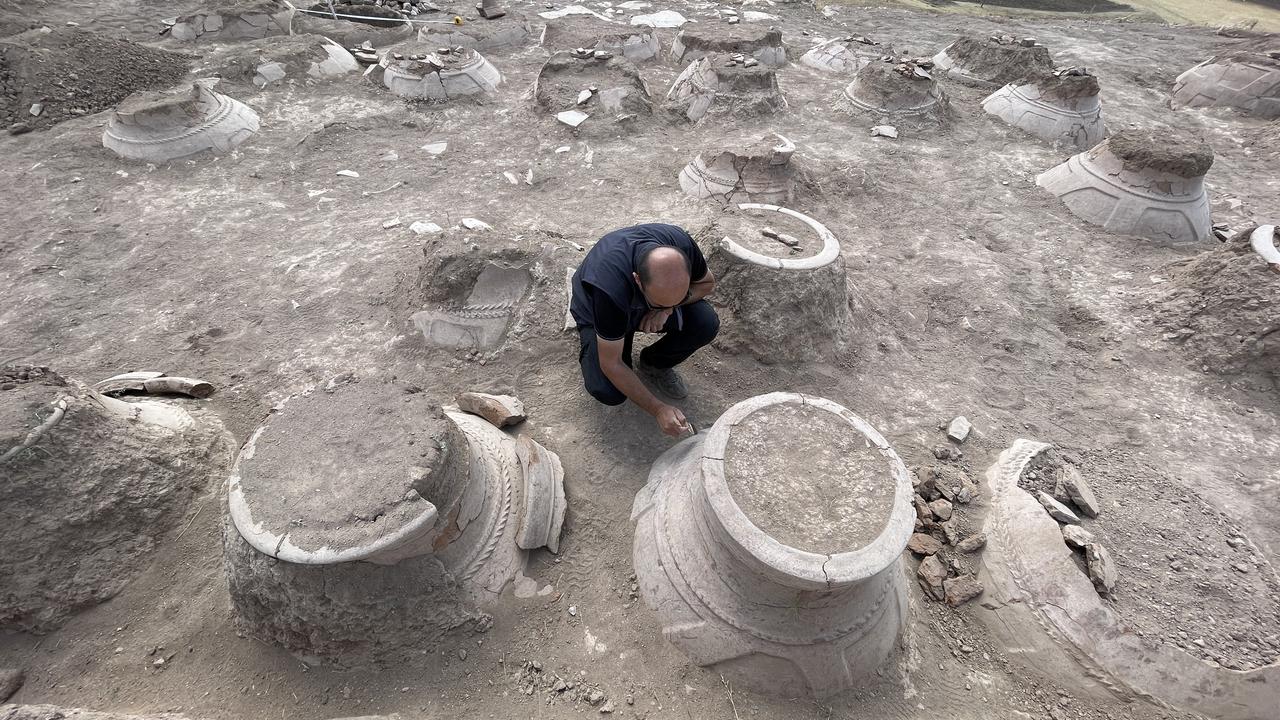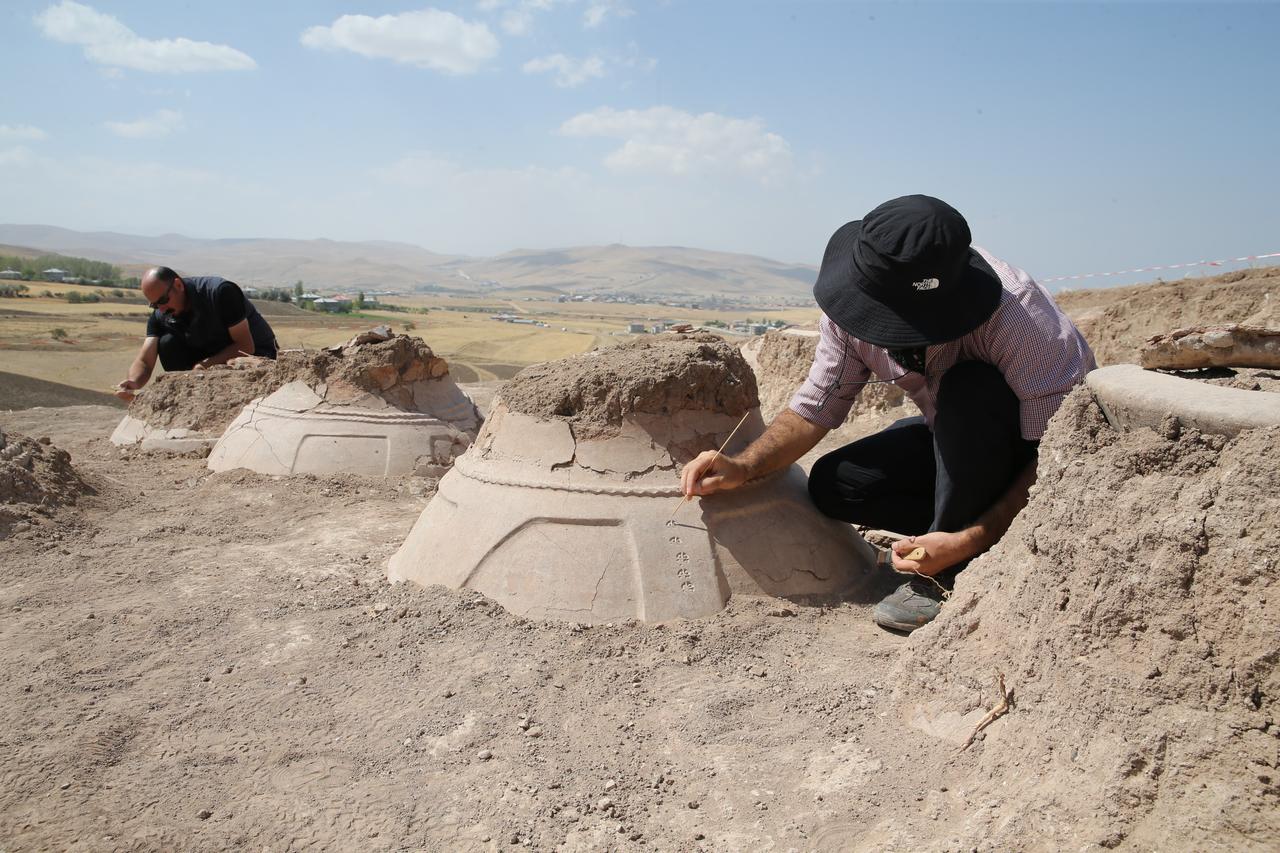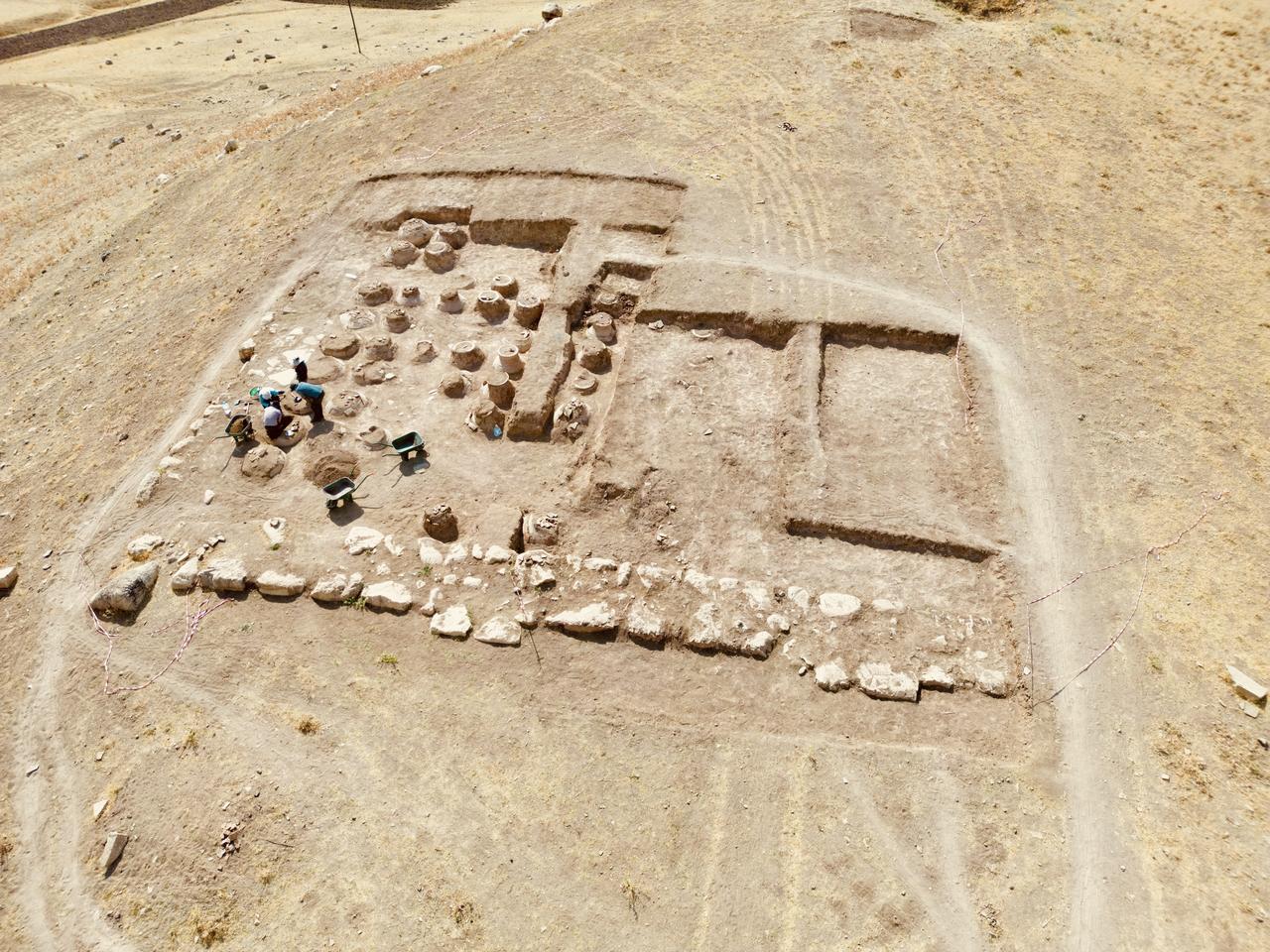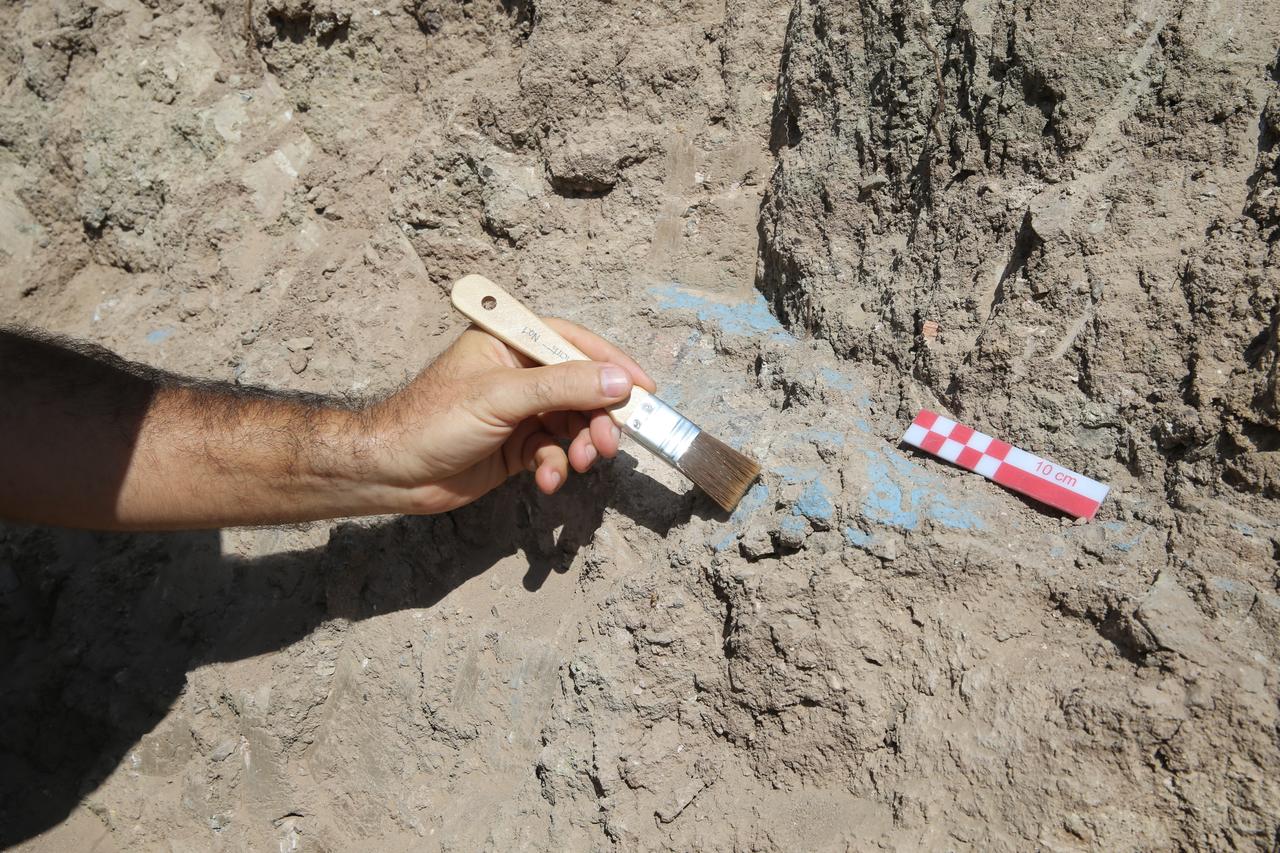
Archaeologists working at Kevenli Fortress in eastern Türkiye have uncovered 76 large storage jars, known as pithoi or pithos, each marked with cuneiform inscriptions.
The find sheds new light on how the ancient Urartians preserved and recorded their agricultural produce nearly three millennia ago.

The excavation site lies on the slopes of Mount Erek in Van’s Ipekyolu district, where Kevenli Fortress once stood as part of the Urartian kingdom or Kingdom of Urartu. Despite being a relatively small-scale fortress, the large number of jars points to a surprising storage capacity.
The pithos, buried in a symmetrical order, were likely used to store grain, oil, and beverages. According to excavation director Rifat Kuvanc of Igdir University, the discovery suggests that Kevenli acted as one of the largest agricultural depots identified in the Van region so far.

What makes this collection stand out is the presence of cuneiform inscriptions on the jars. The markings indicate measured quantities, providing valuable data on how the Urartians recorded and organized their resources.
Researchers believe this system helped regulate supplies for the fortress and possibly the wider Van plain, which was known for its fertile agricultural production.

A team of archaeologists, art historians, and restorers has begun analyzing the jars’ contents. Preliminary examination of one jar revealed a small number of preserved seeds.
These samples will be tested in an ongoing archaeobotany project using ancient DNA methods to reconstruct past cultivation patterns. The team plans to open more jars in the coming weeks, expecting to identify a wider variety of plant remains that could provide insight into Urartian diet and farming practices.

Excavations also brought to light part of a terracotta water pipe, or kunk, used to carry liquids into the fortress. Though the pipe’s full course is not yet known, similar systems have been documented at other Urartian sites such as Ayanis Fortress.
In addition, fragments of painted wall plaster in black and red indicate that Kevenli once had rooms decorated with colorful murals. The dig also uncovered examples of palace pottery, including one sherd decorated with the figure of a lion, a common motif in Urartian art.